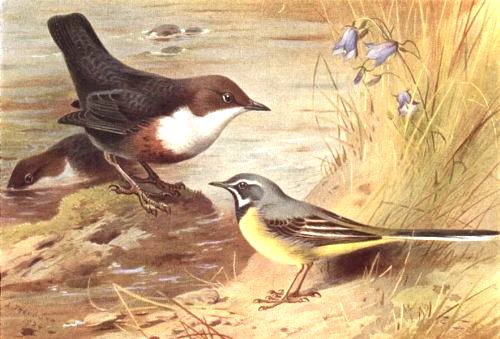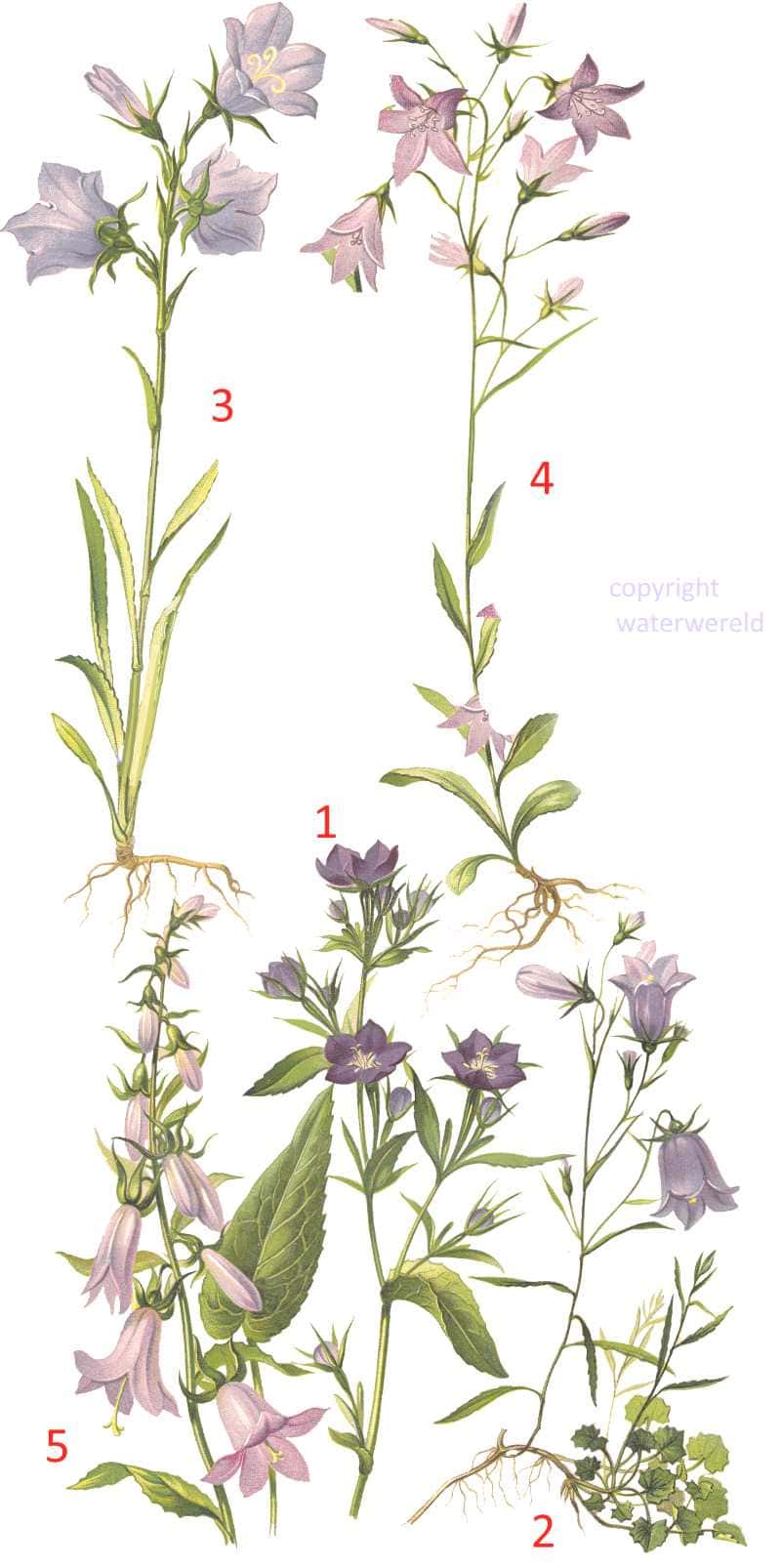creeping bellflower
The creeping bellflower flowers with nice blue or blue-violet , trumpet shaped flowers along a tall, thin stem. It is very tolerant for dry or humid soil and full sun or full shade. Native of Eurasia but nowadays widespread in North America.
becoming an noxios weed in North America
Bellflower were exported from Europe to the V.S. as an ornamental plant. Here they escaped from the gardens to become an invasive weed in the VS and Alberta (Canada).
2 ways of propagation
propagation by seed:
Each plant produces from 50 – 100 flowers, each of which can yield 50 – 150 seeds per capsule (5), so producing about 10000 seeds.
Each plant can produce 10, 000 seeds and it also reproduces through its long tuberous root system.[3]
Creeping bellflower thrives in dry or wet soils, full sun or full shade. It can lay dormant for years and, if there are no insects to pollinate, it will pollinate itself to make seeds.
Controlling It
Most importantly, if you see a pretty blue flower appear unexpectedly, yank it out! There are several other Campanulas which boast the same clear blue flowers and won’t drive you to distraction.
You can slow the spread by pulling them before they bloom. This will stop the spread of seeds and will start to deprive the rhizome of the photosynthesized nutrients sustaining it.
Always check the ingredients on wildflower seed packages, as it’s been known to find its way into the mix. Never buy wildflower seed packs that don’t list all the species inside.
Don’t bother spraying ‘Kill-Ex’ on it. Creeping Bellflower is immune to 2,4-D (the active ingredient). ‘Round-Up’, containing glyphosphate, will slow it down but, in the process, will kill everything green it touches and, yes, the zombies will keep coming.
The rhizomes run so deep that you would have to excavate almost a foot of earth to reach them, and even so if there is even one shred left it will create a new batch of zombies. The best control is good old-fashioned pulling of every one you see. It will take time, but you’ll slow them down and, over years, severely weaken the rhizome.

White troated dipper, Grey wagtail, and a flowering creeping bellflower on an illustration from Thorburn.
This plant has its overwintering buds situated just below the soil surface (hemicryptophyte). It spreads by underground rhizomes and produces deep, taproot-shaped tubers. Both are white and fleshy. Because any piece of the roots can sprout into a new plant, it is extremely hard to eradicate.delicate-looking stems 20 to 45 cm tall; stem leaves
are alternate, linear to lanceolate (less than 1 cm
wide) with smooth margins; basal leaves stalked,
kidney to heart shaped with rounded teeth, present
when flowering (Moss 1983), all leaves glabrous; one
to five flowered in a loose raceme with blue to blueviolet
(occasionally white) bell-shaped nodding or
(occasionally) erect flowers, 15 to 25 mm long with
5 sepals, 5 campanulate petals, 5 stamens and 1 pistil
(Royer and Dickinson 2007).
Fruit: Capsule 5 to 8 mm long producing many seeds
Harebell is a lookalike
The lovely Harebell (Campanula rotundifolia) has almost the same flowers as creeping bellflower (C. Rapunculoides), but has round leaves. Have a look beneath:

1 Venus Looking Glass or Specularia speculum
2 harebell or Campanula rotundifolia
3 peach-leaved bellflower or Campanula persicifolia
4 spreading bellflower or Campanula patula
5 Creeping bellflower or Rampion bellflower or Campanula rapunculoides
The campanula family.
The campanula family consists of herbs and shrubs with alternate leaves and scattered flowers. Almost all the species have a white milky latex substance in stem and leaves. The name campanula is Latin for “little bell”.
reference
5 Brown, S. and A.G. Stephenson. 2000. Factors Affecting Mating System Traits in Campanual rapunculoides, a
Partially Self-Compatable Species. (Poster:
http://www.bio.psu.edu/People/Faculty/Stephenson/Lab/posters.campanula.pdf).
